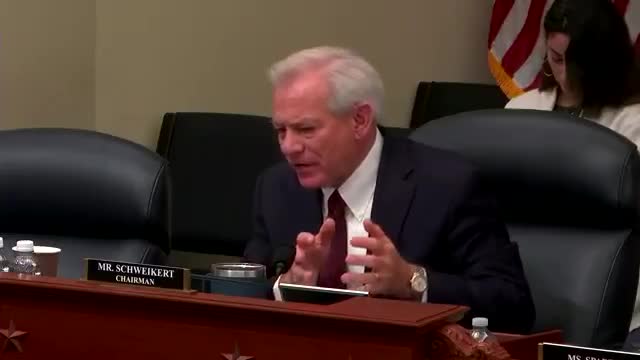Panel explores automation solutions to U.S. labor shortages and regulatory challenges
June 05, 2025 | Joint Economic Committee, Joint Committees, Congressional Hearings Compilation
This article was created by AI summarizing key points discussed. AI makes mistakes, so for full details and context, please refer to the video of the full meeting. Please report any errors so we can fix them. Report an error »

The Joint Economic Committee convened on June 5, 2025, to discuss critical barriers to supply chain modernization and enhancements in factor productivity. The meeting highlighted the urgent need for regulatory reform to keep pace with technological advancements and demographic shifts affecting the workforce.
A significant point raised during the session was the demographic challenge facing the United States. The number of 18-year-olds entering the workforce is at its lowest percentage in history, while the population aged 65 and older has doubled over the past two decades. This imbalance poses a threat to productivity and economic growth, necessitating innovative solutions to maintain societal standards of living.
Participants emphasized the potential of automation and artificial intelligence (AI) to address these challenges. One speaker referenced a doctoral thesis exploring the economic impact of fully automated vehicles on American highways, noting the substantial value of time saved and increased productivity. However, the current regulatory framework is seen as a major obstacle to implementing such technologies. The existing system is often slow to adapt, creating a "pacing problem" where technology outstrips regulation.
The discussion also touched on the concept of crowdsourcing data for environmental monitoring as a way to enhance regulatory efficiency. This approach could allow for real-time oversight of air quality and other environmental factors, potentially streamlining the regulatory process. However, the entrenched interests benefiting from the current regulatory regime pose significant resistance to such innovations.
Moreover, the committee members acknowledged the need for a more flexible immigration policy to address labor shortages, particularly in sectors like trucking, where the average driver is aging. Suggestions included creating a talent-based immigration system to attract younger workers and fill critical gaps in the labor market.
In conclusion, the meeting underscored the necessity for a comprehensive reevaluation of regulations to foster innovation and productivity in the face of demographic challenges. The committee called for actionable ideas to modernize the regulatory landscape, emphasizing that without such changes, the U.S. risks falling behind in global competitiveness and economic growth.
A significant point raised during the session was the demographic challenge facing the United States. The number of 18-year-olds entering the workforce is at its lowest percentage in history, while the population aged 65 and older has doubled over the past two decades. This imbalance poses a threat to productivity and economic growth, necessitating innovative solutions to maintain societal standards of living.
Participants emphasized the potential of automation and artificial intelligence (AI) to address these challenges. One speaker referenced a doctoral thesis exploring the economic impact of fully automated vehicles on American highways, noting the substantial value of time saved and increased productivity. However, the current regulatory framework is seen as a major obstacle to implementing such technologies. The existing system is often slow to adapt, creating a "pacing problem" where technology outstrips regulation.
The discussion also touched on the concept of crowdsourcing data for environmental monitoring as a way to enhance regulatory efficiency. This approach could allow for real-time oversight of air quality and other environmental factors, potentially streamlining the regulatory process. However, the entrenched interests benefiting from the current regulatory regime pose significant resistance to such innovations.
Moreover, the committee members acknowledged the need for a more flexible immigration policy to address labor shortages, particularly in sectors like trucking, where the average driver is aging. Suggestions included creating a talent-based immigration system to attract younger workers and fill critical gaps in the labor market.
In conclusion, the meeting underscored the necessity for a comprehensive reevaluation of regulations to foster innovation and productivity in the face of demographic challenges. The committee called for actionable ideas to modernize the regulatory landscape, emphasizing that without such changes, the U.S. risks falling behind in global competitiveness and economic growth.
View full meeting
This article is based on a recent meeting—watch the full video and explore the complete transcript for deeper insights into the discussion.
View full meeting